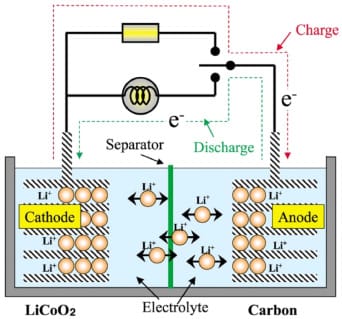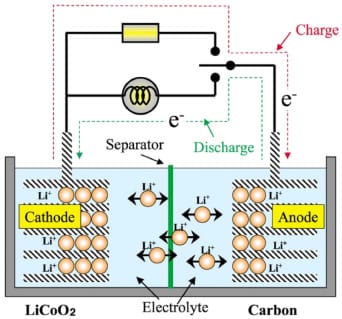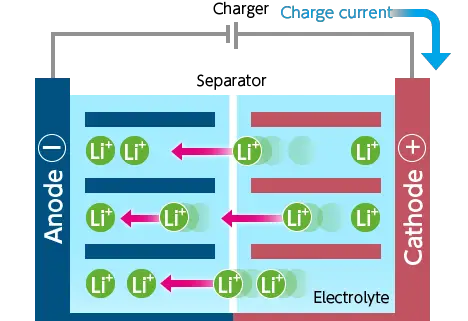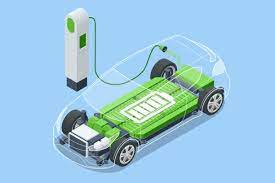The Power Behind Electric Mobility: Unraveling the Mechanics of Lithium Batteries.
In the realm of sustainable transportation, lithium batteries stand as the silent heroes powering the electric revolution. From sleek sedans to robust SUVs


In the realm of sustainable transportation, lithium batteries stand as the silent heroes powering the electric revolution. From sleek sedans to robust SUVs, these compact energy reservoirs are driving the transition towards a greener future, notably in electric vehicles (EVs). But what exactly makes lithium batteries the go-to choice for propelling our cars into the future, and how do they work their magic within the confines of an electric vehicle?
The Lithium-ion Backbone
At the heart of electric mobility lies the lithium-ion battery, a marvel of modern engineering that efficiently stores and releases energy through a reversible electrochemical reaction. Unlike conventional lead-acid batteries, which power traditional internal combustion engine vehicles, lithium-ion batteries offer a higher energy density and longer lifespan, making them the frontrunners in the EV revolution.
Read: Lithium-ion battery, how does it work?
Anatomy of a Lithium Battery
Within the confines of a lithium battery pack, intricate layers of electrodes, electrolytes, and separators come together to form a powerhouse of energy storage. Let's delve deeper into each component:
- Cathode: Composed of lithium metal oxides like lithium cobalt oxide (LiCoO2), lithium manganese oxide (LiMn2O4), or lithium iron phosphate (LiFePO4), the cathode acts as the source of lithium ions during the battery's discharge phase.
- Anode: Typically made of graphite, the anode serves as the host for lithium ions during charging, allowing them to embed themselves within its structure.
- Electrolyte: A conductive solution that facilitates the movement of lithium ions between the cathode and anode while preventing direct contact between the two electrodes.
- Separator: A permeable membrane that physically separates the cathode and anode, preventing short circuits while allowing the passage of lithium ions.

Related: Future of electric vehicles and Lithium-ion batteries.
The Charging Dance
When plugged into a power source, such as a charging station, the lithium battery undergoes a complex choreography of chemical reactions to store energy. During charging:
- Lithium Ion Migration: Lithium ions travel from the cathode to the anode through the electrolyte, embedding themselves within the graphite structure of the anode.
- Electron Flow: Simultaneously, electrons are released from the cathode and flow through an external circuit to the anode, generating an electrical current that can be harnessed to power the vehicle.
Powering the Drive
Once charged, the lithium battery eagerly awaits its moment to shine on the road. As the driver accelerates, the battery springs into action, releasing stored energy to power the electric motor. This process is reversed during braking, with the motor acting as a generator to replenish the battery's charge through regenerative braking.

The Environmental Advantage
Beyond their superior performance, lithium batteries offer a compelling environmental advantage over their fossil fuel counterparts. By eschewing greenhouse gas emissions and toxic byproducts associated with combustion engines, EVs equipped with lithium batteries play a pivotal role in reducing carbon footprints and mitigating climate change.
See: Lithium-based batteries could make electric vehicles cheaper
Challenges on the Horizon
Despite their numerous benefits, lithium batteries are not without their challenges. Issues such as limited battery lifespan, resource scarcity, and concerns over recycling and disposal highlight the need for continued innovation and sustainability in battery technology.
The Future of Mobility
As technology marches forward, the future of electric mobility shines ever brighter. With ongoing research into advanced battery chemistries, solid-state electrolytes, and enhanced energy storage solutions, the era of lithium batteries in electric vehicles is poised to evolve, ushering in a new age of sustainable transportation.
Read: Lithium And The Booming EV Industry
Lithium-ion batteries have emerged as the linchpin of modern technological advancement, revolutionizing industries ranging from electronics to transportation and renewable energy. Their importance lies not only in their ability to store and deliver energy efficiently but also in their capacity to drive innovation, sustainability, and economic growth on a global scale. Here below are some of the significance of the Lithium-ion batteries:
1) Driving the Digital Age
In the realm of consumer electronics, lithium-ion batteries reign supreme, powering the devices that have become integral to daily life. From smartphones and laptops to tablets and wearable gadgets, these compact powerhouses enable unprecedented mobility and connectivity, allowing individuals to stay connected and productive regardless of location.
See: The decline in the price of Lithium makes Electric cars affordable.
2) Empowering Renewable Energy
As the world shifts towards a more sustainable energy paradigm, lithium-ion batteries play a pivotal role in harnessing the power of renewables. Whether paired with solar panels or wind turbines, these batteries serve as vital storage solutions, capturing excess energy during periods of peak production and releasing it when demand surges or renewable sources wane. This capability is essential for stabilizing the grid and maximizing the efficiency of renewable energy systems.
3) Revolutionizing Transportation
In the transportation sector, lithium-ion batteries are driving the transition towards electric mobility, offering a cleaner, greener alternative to traditional fossil fuel-powered vehicles. Electric cars, buses, trucks, and bicycles equipped with lithium-ion battery packs are not only reducing greenhouse gas emissions but also decreasing reliance on finite fossil fuel resources, mitigating air pollution, and enhancing energy security.
Read: Wheego Whip LiFe With a Lithium Iron Phosphate Battery
4) Enabling Energy Independence
Beyond transportation, lithium-ion batteries are empowering individuals and communities to achieve greater energy independence. Home energy storage systems allow homeowners to store excess energy from solar panels for use during times of high demand or grid outages, reducing reliance on centralized power grids and lowering electricity bills. Similarly, microgrid solutions equipped with lithium-ion batteries offer resilience against blackouts and natural disasters, ensuring the continuity of essential services in remote or vulnerable regions.
5) Fostering Innovation
The importance of lithium-ion batteries extends beyond their immediate applications, catalyzing innovation across a myriad of industries. From medical devices and aerospace technologies to grid-scale energy storage and electric aviation, the versatility and scalability of lithium-ion battery technology continue to inspire breakthroughs that push the boundaries of what is possible.
Addressing Challenges
While lithium-ion batteries offer immense promise, they are not without challenges. Issues such as cost, resource availability, safety concerns, and environmental impacts necessitate ongoing research and development efforts to improve performance, sustainability, and scalability. Innovations in battery chemistry, manufacturing processes, and recycling technologies are essential for addressing these challenges and unlocking the full potential of lithium-ion batteries.
Related: Electric car battery technology
Conclusion
In an era defined by rapid technological advancement and increasing environmental awareness, the importance of lithium-ion batteries cannot be overstated. As catalysts for progress and agents of change, these compact energy storage devices are driving innovation, sustainability, and economic development across industries, shaping a brighter and more resilient future for generations to come. With each revolution of the wheels, these compact energy reservoirs embody the promise of sustainable mobility, driving innovation and progress on the road ahead.
Please watch the video




